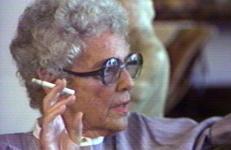
Independently Produced Interviews includes artist interviews and documentaries produced by external producers and producing organizations, including Artists Television Network, Long Beach Museum of Art, and the University of Colorado. The section also features interviews produced by other artists, including Antonio Muntadas’ seminal Between the Frames, a series of programs focused on the art world through interviews that reveal the interwoven structures delimiting how art communicates, and how it is made, bought, and sold.
The second in a series of cross-cultural symposia organized by Lucy Lippard, the four artists interviewed here—Jolene Rickard, Robbie McCauley, Judy Baca, and May Sun—discuss their work and its cultural contexts. Moderated by Lucy Lippard.
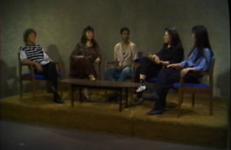
The third in a series of cross-cultural symposia organized by Lucy Lippard, the four artists interviewed here—Jean Lamar, Hung Liu, Lorna Simpson, and Kathy Vargas—discuss their work and its cultural contexts. Moderated by Lucy Lippard.
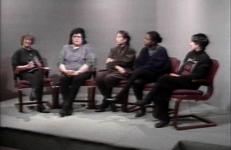
The fourth in a series of cross-cultural symposia organized by Lucy Lippard, the four artists interviewed hereÑJapanese-American painter and political activist Betty Kano, conceptual and performance artist Lorraine O'Grady, Hopi weaver Ramona Sakiestewa, and Chicana narrative and installation artist Celia Alvarez Muñoz–discuss their work and its cultural contexts.
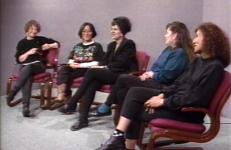
The fifth in a series of cross-cultural symposia organized by Lucy Lippard, the four artists interviewed here–Tejana tableaux artist Santa Barranza, Taiwanese video and interactive installation artist Shu Lea Cheang, African-American sculptor and installation artist Joyce Scott, Native-American photographer Hulleah Tsinhnahjinnie–discuss their work and its cultural contexts. Moderated by Lucy Lippard.
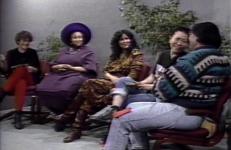
The sixth in a series of cross-cultural symposia organized by Lucy Lippard, the four artists interviewed here–gay activist and self portrait artist Lyle Ashton Harris, Chicano photographer and tourist Robert Buitron, Cherokee writer, curator, and video creator Rayna Green, photography critic and professor at University of California-Irvine Catherine Lord, and Chinese-American video artist Valerie Soe–discuss the role of photography and creation of culture. Moderated by Lucy Lippard.
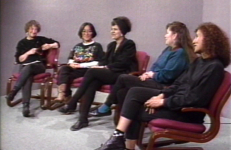
The seventh in a series of cross-cultural symposia organized by Lucy Lippard, the four artists interviewed here–visual anthropologist Wendi Starr-Brown, Hapa video and performance artist Kip Fulbeck, Japanese-American artist Dorothy Imagire, Chicana mixed-media artist Yolanda López–address the role of mixed-race identity in their work. Moderated by Corissa Schweitz Gold.

A philosopher and intermedia artist, Adrian Piper focuses on xenophobia, racism, and racial stereotyping
“As a black woman who can 'pass' and a Professor of Philosophy who leads a double life as an avant-garde artist, Piper has understandably focused on self-analysis and social boundaries. Over the years her work in performance, texts, newspaper, unannounced street events, videos, and photographs has developed an increasingly politicized and universalized image of what the self can mean.”
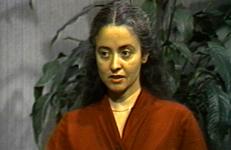
Painter Peter Saul’s iconoclastic paintings parody various aspects of contemporary American life, from politics to sex to violence. He has been an inspiration to several generations of American painters and is retired from the Department of Fine Arts at University of Texas-Austin. Interview by Jim Johnson.
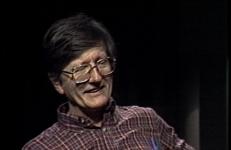
Andres Serrano was born and raised in New York. At fifteen he dropped out of high school. A few years later he attended the Brooklyn Museum School and studied painting and sculpture. After two years, Serrano decided that neither of these art forms were appropriate for his particular vision, and began to make photographs. Serrano’s work came to the attention of the general public as part of the controversy surrounding the issue of censorship and the NEA.
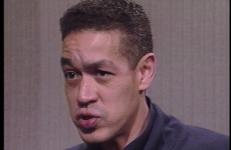
Ingrid Sischy was editor of Artforum in the 1980s and has been editor-in-chief of Interview magazine since the 1990s. In this interview with Robin White, Sischy discusses Artforum’s priorities, purpose, and goals.
“It’s an intricate history where painting, sculpture, performance, video, and photography are extremely connected to each other. As the editor of Artforum, I would feel at great fault to not include the best and the most interesting questions of each because they affect each other, and artists’ choices are not made in a vacuum.”
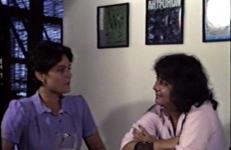
Washington, D.C.-based African-American artist Sylvia Snowden paints what she calls “figural or structural abstract expressionist” works. Three years after this tape was produced, her son was shot to death, and she spent the next three years producing 87 works in a variety of media.
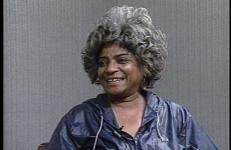
This work was produced in connection with Icono Negro, a three-artist show at Long Beach Museum of Art exploring the dynamics and distinctions of black video art. Three works featured in the show—Tony Cokes’s Black Celebration, Philip Mallory Jones’s What Goes Around, and Lawrence Andrews’s An I for an I—are shown in their entireties and commented upon by curator Claire Aguilar and video artists Ulysses Jenkins and O. Funmilayo Makarah.
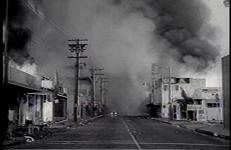
Sculptor Jackie Winsor creates large-scale constructions in wood, fiber, twine, and wire. Recent works are subjected to explosions and fire. Winsor lives and works in New York City. Interview by Kay Miller and Albert Alhadeff.

Women with a Past brings together four 20th Century artists — Yvonne Rainer, Christine Choy, Martha Rosler, and Nancy Spero — in videotaped interviews, shaped and edited by Lyn Blumenthal to examine the art of documentary. In a skillfully woven series of scenes in which the interviewer’s voice is not heard, the interviewees appear to be talking directly, intimately to the viewer. Blumenthal used short segments of each woman’s work to demonstrate how her philosophical and political stances are articulated.
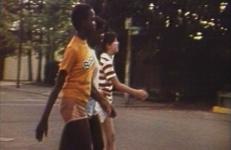
Fiber artist Claire Zeisler discusses her techniques, ideas on art, and training; the conversation is inter-cut with images from her 1979 retrospective at the Art Institute of Chicago. “I... realized I cannot change my techniques too often. I would rather use techniques that I know and keep on perfecting them because I feel that in keeping on and perfecting them, I’m going to find something else to say,” Zeisler says in this interview with Rhona Hoffman.
